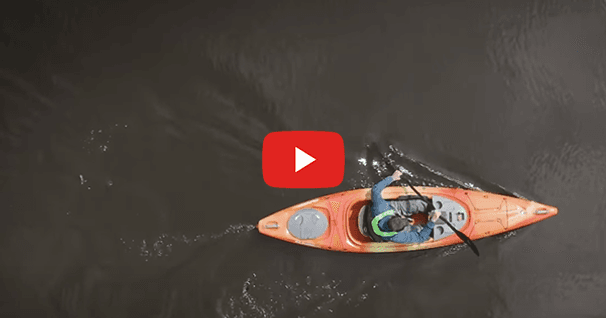Managing Holes
Holes provide your most formidable challenge when running a rapid. More often than not, the line you pick through a rapid will take you around the holes, but sometimes this just isn't an option. We're going to take a quick look at what your best options are when an encounter with a hole is inevitable.
There are three main techniques for getting past a hole: you can "boof" or jump over a hole, you can punch a hole, or you can drop in and surf out of a hole.
Boofing a Hole
Boofing is a term most commonly associated with running waterfalls, but the term can be used across situations, as it really just describes the action of keeping the bow of your kayak on top of the water. Boofing is the cleanest and most controlled way of getting past a hole. Unfortunately, it's not always possible. It becomes particularly tricky for big holes with large, vertical foam piles. The easiest holes to boof are those with flatter foam piles, like pourovers.
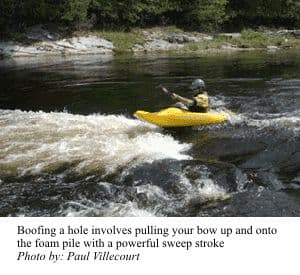
To boof a hole, start with some speed and then take a powerful sweep stroke to pull your bow into the air and on top of the foam pile. To lift your bow higher, edge your boat into your front sweep. A good boof will usually allow you to skip right over the hole. The most difficult aspects of boofing are the timing and set up of the boof stroke. You need to approach the hole with a slight angle and time your sweep so that it brings your bow on top of the foam pile to point directly downstream.

Punching a Hole
Punching a hole is a technique you can use before you have the boat control for boofing, or when the hole's foam pile is so large and vertical that boofing would just land you flat on your back. To punch a hole you need speed, an aggressive attitude, and a well-placed last stroke. Speed is important because you're going to be hitting a wall of aerated water that will try to stop you dead.
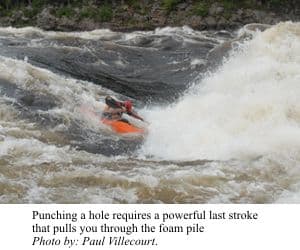
An aggressive attitude is important because you need to keep your weight forward when you hit the hole to prevent your stern from catching and rocketing you up into a vertical stern squirt. Take your last stroke just as you impact the hole and use it to pull yourself through. This stroke is also handy as a brace during impact, acting as an anchor up at the front of the boat. With this in mind, it's a good idea to punch a hole with your boat tilted slightly towards your last stroke. This helps avoid a surprise flip to your non-bracing side and it also helps prevent your stern from catching the green water in the trough.
Pulling Out of a Hole
A final way of navigating through holes is to surf the hole and maneuver out the side. Although this won't be your best option for all holes, there are times when surfing a hole makes a lot of sense. In particular, it makes sense when you want to decrease your downstream momentum. By surfing a hole, you can move laterally to the main current without losing any ground. We're not going to look at the specific techniques required for side surfing and exiting a hole in this article, as that is a topic of its own.
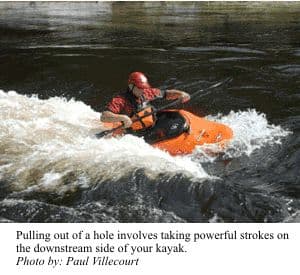
For now, you should recognize that it's not written in stone that holes are always to be avoided; hole surfing is an important river running technique that should be practiced.
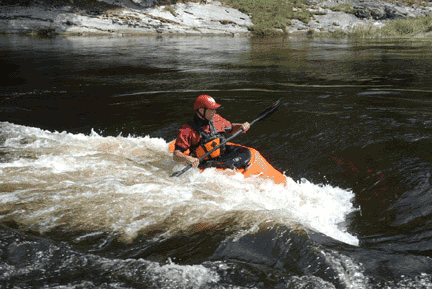
Related Articles
Recreational kayaks and touring kayaks are typically designed to paddle in a straight line. This means…
Even though they are flipping over, missing their gates and failing their maneuvers, they still look…
One of the big reasons stand up paddling has been exploding in popularity, is that on a very basic…
One of the greatest challenges for the solo paddler is paddling in a straight line. And, of course,…
